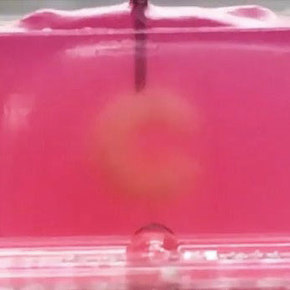Hydrogel Offers Struture for Bioink Printing
 Jun-18-19
A new method for printing 3D-biological tissue replaces the typical scaffold with a micro-bead hydrogel.
Jun-18-19
A new method for printing 3D-biological tissue replaces the typical scaffold with a micro-bead hydrogel.Though scaffolds provide needed support for the seeding cells used in bioprinting, the scaffolds must be carefully structured to degrade at the proper time, and can interfere with cellular communication.
To help avoid these obstacles, the team from the University of Illinois created a hydrogel made up of microscopic beads. The printer nozzle is submerged in the gel, where it deposits a bioink held in place by the microbeads. Exposing the material to ultraviolet light will cause the beads to cross-link and form a stable shape aa well as a nutrient platform for the cells to grow, and the beads can be easily removed once the biotissue is mature, leaving only the completed organ or tissue behind.
More Info about this Invention:
[3DPRINTINGINDUSTRY.COM][TODAY.UIC.EDU]

Add Your Comment